

Travel is a wonderful way to discover new places and cultures. Having diabetes shouldn't stop you from experiencing new places. With these tips from the American Diabetes Association, you can stay healthy and safe on your adventures far from home!
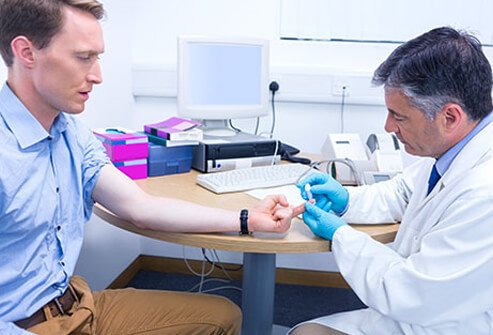
Having diabetes means you should plan ahead before you travel. Be sure to see your doctor before you leave. Get a check-up and make sure your diabetes is in control. If you need immunizations for your destination get them at least one month before departure. This way, if the shots make you sick, you'll have time to recover. You'll need two important items from your doctor: a letter and prescriptions. The letter should explain in detail what you need to manage your diabetes while you're away, such as taking diabetes pills or insulin shots. It should also list insulin, syringes, and other medications or devices you used, along with allergies or food sensitivities. You may complete a TSA (Transportation Security Administration) notification card to present to the officer at the airport. This card is another way to inform the TSA officers of your condition. Your doctor should also prescribe any insulin, diabetes medications, and syringes you will need; you should have more than enough to last throughout your trip. In the Unites States, prescription rules vary, depending on the state. However, your prescription may help in case of emergency. If you are traveling abroad, research prescription laws of your destination, they may be very different than those at home.
What Your Doctor’s Letter Should List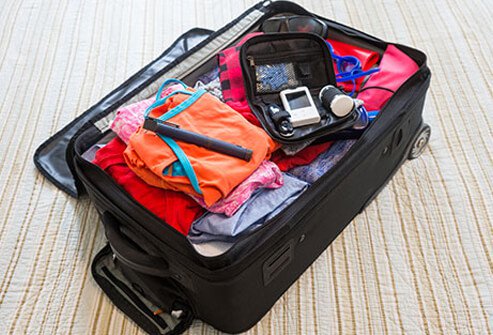
Always take your medications and medical supplies with you; never pack them in checked luggage. Medication should also be clearly labeled and it is suggested to check with state laws regarding medication labels. The American Diabetes Association recommends you keep a carry-on bag with you at all times with needed items, such as:
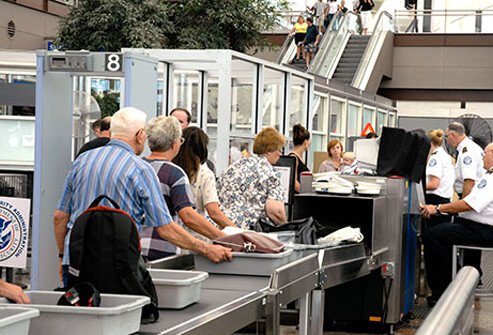
If your trip involves air travel, it's ok to put your glucose meter, insulin, or insulin pump through the X-ray machine. However, you can always ask to have your carry-on items hand-inspected if you have concerns.
Bringing Insulin Through Airport Security
In order to bring syringes or insulin delivery systems on an airplane, you must have a vial of insulin presented with a professional, preprinted pharmaceutical label that clearly identifies the medication. Bring the original insulin box with the label displayed on it. Any lancets must be capped and brought on board with a glucose meter that has the manufacturer's name printed on it. Glucagon kits should be kept in their original containers with preprinted pharmaceutical labels. The labels should not be altered in any way.
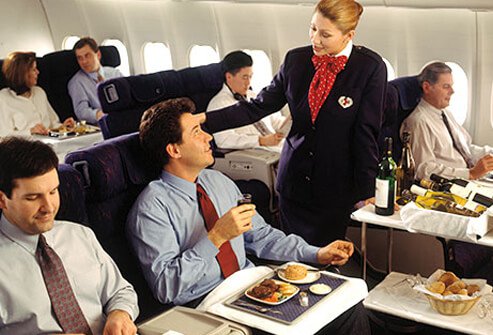
It's important to eat correctly when you travel and airlines offer meals low in sugar, fat, or cholesterol. Contact your airline and make your meal request at least 48 hours in advance of your flight.
If you take insulin, wait to take your shot until right before you eat, when the food is already in front of you. If you are traveling alone, because of elevated anxiety of some plane passengers, it may be useful to inform airline personnel and the person sitting next to you that you are diabetic and will need to take a medication shot before you eat. Having a pre-packaged snack with you will prevent low blood sugar, in case your food takes a while to be served or if your order is incorrect.
Also, remember airplane cabins are pressurized, meaning before you use a syringe in flight, you will need to remove and replace the plunger to allow pressure equalization.

Traveling across time zones may affect the timing and amount of your insulin doses. If you are traveling eastward, you lose time and thus your day is shorter and you may need less insulin. When you travel westward you gain time, making your day longer and possibly requiring more insulin. Your doctor can recommend any adjustments you may need to make in your insulin regimen.
Keep your watch set to the time of your travel origin to help you to remember when to take your insulin. Reset your watch to local time the morning after you arrive. Check your blood sugar level when you land, it may be hard to tell if you are jet lagged or have low blood sugar.

You will need to check your blood glucose more often when traveling (at least every 4 to 6 hours). In addition, when you travel you may be more active than usual which could lead to low blood sugar levels.
Extra Supplies to Bring While Traveling
Bring two blood glucose monitors with you (pack each separately) and up to 2 weeks of extra supplies including insulin, test strips and lancets, glucose meter batteries, and insulin pump supplies. It may also be a good idea to carry rapid-acting insulin, even if you don't normally use it, to treat high blood glucose in a pinch. Be sure to bring appropriate shoes and check your feet daily for any signs of infection.

Hydration is important when traveling, so make sure you carry plenty of water with you. Air travel can be dehydrating so avoid too much coffee, tea, or other beverages with caffeine as these have diuretic properties and can contribute to dehydration. Limit sugary drinks such as soda, lemonade, or fruit punch. Be sure to also avoid drinking tap water overseas, including ice cubes.

Travel abroad may pose some unique considerations. All insulins used in the United States are U-100 strength. In foreign countries, insulins may come in U-40 or U-80 strengths, which require new syringes so you don't make a mistake on your dose. If you use a U-100 syringe for U-40 or U-80 insulin you will end up taking less than your required dose, and if you use U-100 insulin in a U-40 or U-80 syringe, you will end up taking too much.
You can find a list of English-speaking doctors in foreign countries from the International Association for Medical Assistance to Travelers (IAMAT). If you don't have a list for the country you are visiting and an emergency occurs, contact the American Consulate, American Express, or local medical schools for a list of doctors.

If you have diabetes, you should wear a medical ID, such as a bracelet or necklace, at all times. If you have any kind of medical emergency –related to your diabetes or otherwise, the ID can let medical care providers know about your diabetes, whether you use insulin, any allergies you may have, or other important medical information. Emergency personnel are trained to look for these medical IDs, especially when a person is unable to speak for themselves.
Traditional medical ID bracelets or necklaces have basic, important health information about the person etched on them, and some newer IDs include compact USB drives with a person’s full medical record for use in an emergency.
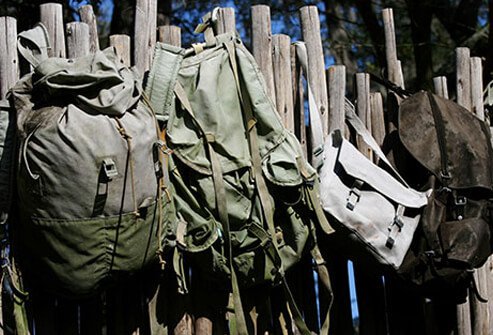
It's important to plan ahead on how to store your medical supplies, especially insulin. While insulin does not need to be refrigerated, it can lose strength if exposed to extreme heat or cold.
Tips for Protecting Your Insulin and Pills
Don't store insulin in the glove compartment or trunk of a car, and keep it out of a backpack or cycle bag that can get hot in direct sunlight. Never freeze insulin, and make sure pills are kept dry because moisture can damage them. If you are traveling in very hot or cold temperatures, plan ahead to protect your insulin. There are travel packs you can buy that will keep your insulin at proper temperatures.
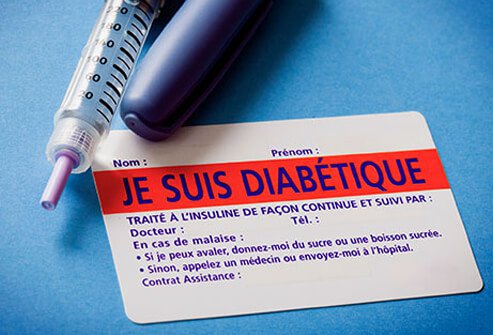
If you are traveling with others, make sure they know the signs of hypoglycemia and teach them how to use a glucagon kit. Keep your glucose tablets or gels easily accessible in case you experience hypoglycemia, which may occur unexpectedly when traveling.
If you are traveling abroad to a country where they speak a different language, learn how to say, "I have diabetes," and "Sugar or orange juice, please," and any other phrases you think you will need. You can also write down phrases on a piece of paper and use it when in need. There are online programs and apps that can help you figure out the correct phrases and pronunciation so you are prepared before you depart.
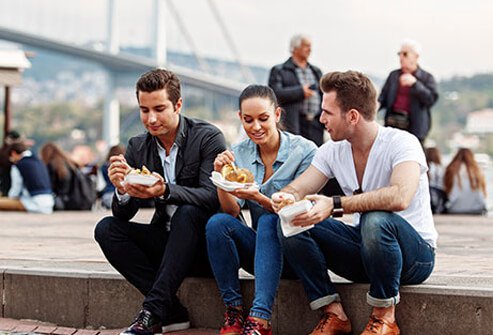
Bring snacks wherever you go, whether you're hiking or sightseeing never assume food will be available. Keep your blood sugar in check by always being mindful of what you eat and drink when traveling. Be careful of unfamiliar food that may make your diabetes difficult to control or may upset your stomach. Ask for ingredients of unfamiliar foods, if you can.
For more information about Diabetes, please consider the following:
American Diabetes Association
Diabetes Research Institute Foundation
The National Institute of Diabetes and Digestive and Kidney Diseases
Reviewed by Charles Patrick Davis, MD, PhD on 8/2/2016
This tool does not provide medical advice. See additional information
© 2005-2018 WebMD, LLC. All rights reserved. Source slideshow at OnHealth